Chaga mushroom (Inonotus obliquus) is a parasitic fungus that grows on birch trees in colder climates across the Northern Hemisphere. This unique functional mushroom has a long history of use in traditional medicine as a remedy for various ailments. Recent scientific studies have shown that the Chaga mushroom contains several biologically active compounds that have the potential to enhance immune function, reduce inflammation, and inhibit tumour growth.
In this blog post, we will delve deeper into the Chaga mushroom properties and potential Chaga mushroom health benefits that make it one of the most powerful mushrooms.
Why Should You Introduce the Chaga Mushroom to Your Routine?
You should consider introducing Chaga mushrooms to your routine for several reasons. For one, this functional mushroom is a rich source of antioxidants, which help protect the body against oxidative stress and damage caused by free radicals [1]. It has one of the planet's highest ORAC (Oxygen Radical Absorbance Capacity) values! ORAC informs us on the ability of a substance to neutralize free radicals so that they do not overpower our antioxidant capabilities and cause oxidative stress.
Antioxidants have been linked to various health benefits, including a reduced risk of chronic diseases such as cancer and heart disease. Chaga mushroom antioxidant properties are substantial. Additionally, Chaga mushroom is thought to have immune-boosting properties, which may help enhance your body's natural defences and reduce your risk of infections [1]. Some studies have also suggested that Chaga mushrooms may have anti-inflammatory effects, which could help alleviate symptoms of conditions such as arthritis and inflammatory bowel disease [2].
Finally, Chaga mushroom is a natural source of several essential vitamins and minerals, including vitamin D, potassium, and zinc, which can help support overall health and well-being [3]. While further Chaga mushroom research is needed to understand the potential health benefits of the Chaga mushroom fully, incorporating this unique fungus into your routine may be a simple and effective way to support your health.

What are the Chaga Benefits?
Chaga Mushroom for Inflammation
Chaga has many anti-inflammatory properties; studies showed many benefits for inflammatory bowel disease (IBD). As the name suggests, inflammatory bowel disease (IBD) has a vital inflammatory component. Inflammation of the intestines (colitis) can lead to mucosal damage and pose risks for cancer development or intestinal perforation.
One study found that colitis treatment with Chaga decreased TNF-alpha expression [2]. TNF-alpha is a pro-inflammatory cytokine, and concentrations are elevated in IBD patients [2]. Clinical therapy investigations into the treatment of IBD have previously centred around blocking TNF-alpha activity, and Chaga seems to exhibit this same effect, illustrating its anti-inflammatory function [2].
Chaga Mushroom for Skin and Hair
When free radicals accumulate in our bodies, one of the ways in which we suffer is through the skin and hair, especially regarding premature aging. Because Chaga is so powerful against the development of oxidative stress, its use may slow hair graying and loss [4].
One study found that the triterpene compounds in Chaga demonstrated pro-proliferative effects on HFDPCs (human follicle dermal papilla cells), meaning that the mushroom extract had stimulating effects on hair growth [4]. Chaga’s effects were more potent than minoxidil (Rogaine), an anti-hair loss agent [4].
Another study illustrated that Chaga had protective effects against oxidative stress-induced death of cells and premature senescence in human fibroblasts [5]. Both factors are critical biological processes underlying aging because their result is a depletion of many types of cells currently cycling within the body [5].
Additionally, Chaga could suppress UV-induced morphologic skin changes, including skin thickening and wrinkle formation [5]. Chaga also increased collagen synthesis by inhibiting MMP-1 and MMP-9 activities; these matrix metalloproteinases degrade different types of collagens in the body [5,6]. This is significant because, as we age, our bodies produce less collagen, which can lead to increased drying of skin and the formation of wrinkles.
Chaga May Help to Lower Blood Sugar
The polysaccharides found in Chaga have been studied to exhibit anti-hyperglycemic activities [7]. In one study, Chaga showed potential in reducing fasting blood glucose levels, glucose tolerance, and insulin resistance [7]. The study suggests that Chaga accomplished this by activating PI3K/Akt phosphorylation and translocation of GLUT4 because these protein expressions were increased in the treatment group [7]. An increase in translocation of GLUT4 is vital because insulin stimulates glucose uptake by this mechanism.
Chaga May Regulate Lipid Levels
Chaga has illustrated lipid-regulating activities. Treatment with Chaga led to lower total cholesterol, triglycerides, and LDL levels, with a simultaneous increase in HDL [8]. LDL is commonly called the “bad cholesterol,” while HDL is the “good cholesterol.” This is because LDL transports cholesterol to our arteries, increasing our susceptibility to form plaques and heart disease, while HDL helps remove different cholesterol forms from our bloodstream.
Chaga Mushroom for Immune System
Chaga mushrooms have established themselves as a point of interest in treating HSV-1. Chaga constituents were able to prevent HSV-1 entry into the body, had a protective effect on cells against HSV entry, and protected them from destruction by the virus [9,10]. Cells infected with HSV had no viral DNA found within them after being treated with Chaga mushroom extracts. This implies Chaga’s ability to prevent recurrent outbreaks in those with dormant HSV [10].
These are just a handful of the many Chaga mushroom uses and properties for overall health and well-being.

How Can You Consume Chaga Mushrooms?
There are several ways to consume Chaga mushrooms and obtain all the Chaga mushroom benefits. However, it depends on your preferences and the availability of the fungus. Here are some of the most common methods:
Chaga Tea: Chaga mushroom tea is a popular way to consume this fungus. To make chaga mushroom tea, simmer a piece of chaga mushroom in water for several hours, strain the liquid, and drink. You can add honey, lemon, or other flavourings to taste.
Chaga Mushroom Powder: Chaga mushroom powder can be added to smoothies, soups, and other recipes for a nutritional boost. Mix the powder into your food or drink.
Chaga Tincture: Chaga mushroom tincture is made by soaking the fungus in alcohol for several weeks to extract its beneficial compounds. You can add the tincture to water or other liquids and drink or take it in droplet form.
Chaga Supplements: Chaga mushroom supplements are widely available in health food stores and online. These supplements typically come in capsule or powder form and can be taken daily as a dietary supplement.

Tips on Buying Chaga Mushroom Products
Figure Out Your Target Concerns
Before deciding on which Chaga mushroom product would be best for you, it is essential to identify the reason behind its use. If it is for overall health and wellness, maximum doses do not need to be used, and thus, a Chaga tea or powder may be beneficial. However, if therapeutic doses need to be reached, a mushroom extract capsule or tincture is more beneficial.
Additionally, there are mushroom powder blends in which many mushroom types work synergistically to provide multiple therapeutic benefits.
Learn How to Read Product Labels
Product labels should inform you on what part of the mushroom the supplement is made from. The fruiting body of a mushroom is the reproductive structure, whereas the mycelium is the vegetative body. The fruiting body is often isolated and consumed in the culinary world, while the mycelium is integrated within the plant matter it feeds from. Thus, mycelium products usually have a lot of fillers and grain products. Although both may contain important functional compounds, the fruiting body contains a significantly higher and increased therapeutic amount.
Avoid Chaga Mushroom Extracts with Extra Ingredients
If a mushroom product contains grain products, this should be listed in their “other ingredients.” Suppose you find the words “full spectrum,” “mycelial biomass,” or “extracellular compounds” on the label. In that case, the product is made from the grain substrate the mushrooms are grown on, and potentially the primordia and fruiting body, all combined and often not in extract form.
Full spectrum is often advertised as a beneficial aspect of the product by some companies, but this means that the product is watered down, and you’d need to consume much more of it to achieve the same benefits as you would from a product containing 100% fruiting body.
Choose a Reputable and Respected Brand
Choosing a reputable and respected brand ensures you get what you pay for. Eversio Wellness consistently practices transparency to its consumers by sharing each product's COAs (Certificate of Analysis). The COAs reassure consumers that the percentage of compounds claimed to be in the products is scientifically confirmed through lab testing. Not only does the COA confirm the percentages of the beneficial constituents, but it also tests the heavy metal and microbial contents so you can be sure that your mushroom product is safe.
Can You Take Chaga Mushrooms Every Day?
Chaga mushrooms can be taken daily, but it is essential to stay within 3600 mg of the dried fruiting body daily due to its betulinic acid content. Make sure to read the labels of your mushroom products and do not exceed the recommended Chaga mushroom dosage to ensure safety.
Where to Buy Chaga Mushroom Products?
Chaga mushroom products can be bought in-store, online, or from certain healthcare practitioners. As mentioned, Eversio Wellness uses 100% fruiting body extracts to ensure the highest therapeutic doses and practices transparency with its consumers by sharing COAs. If you want to incorporate Chaga mushrooms into your daily routine, look here. You can find some Chaga mushroom recipes here if you’d like to incorporate them into your cooking.
We hope you have found this article informative. If you have any questions or comments, please leave them in the comment section below!
Related Articles:
How do Reishi and Chaga Mushrooms Benefit Hair Health?
5 Adaptogenic Mushrooms and Their Amazing Health Benefits
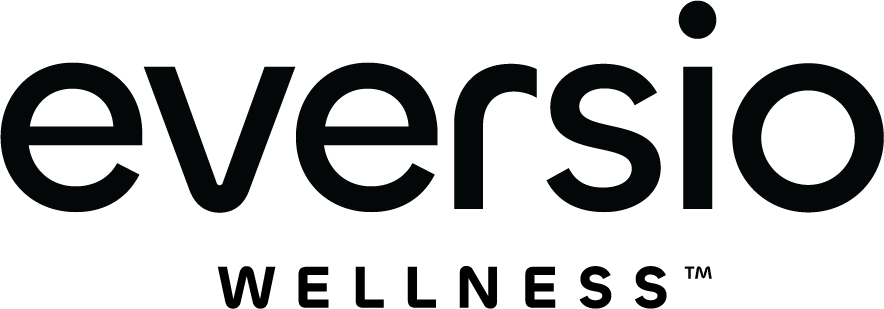
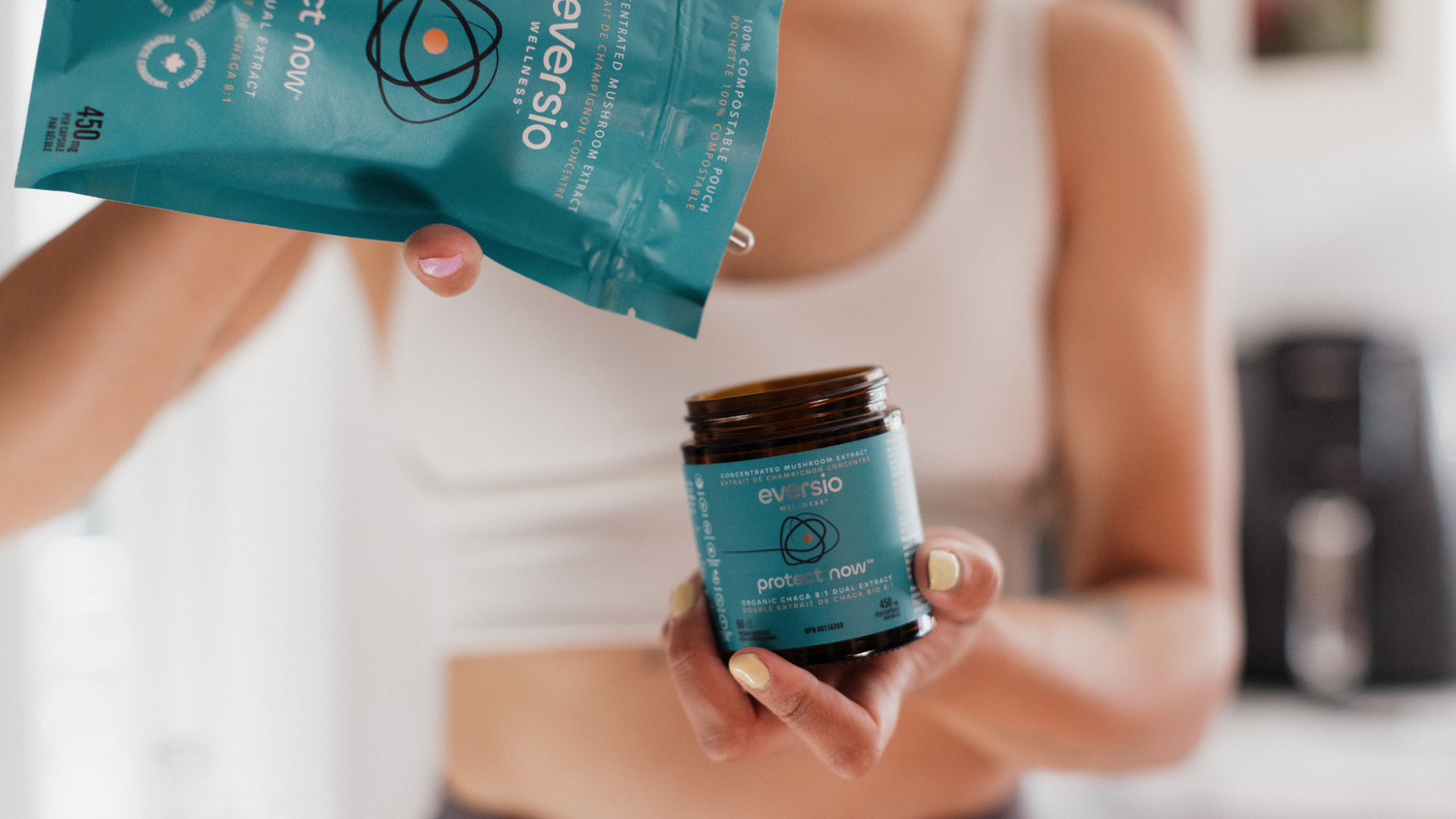
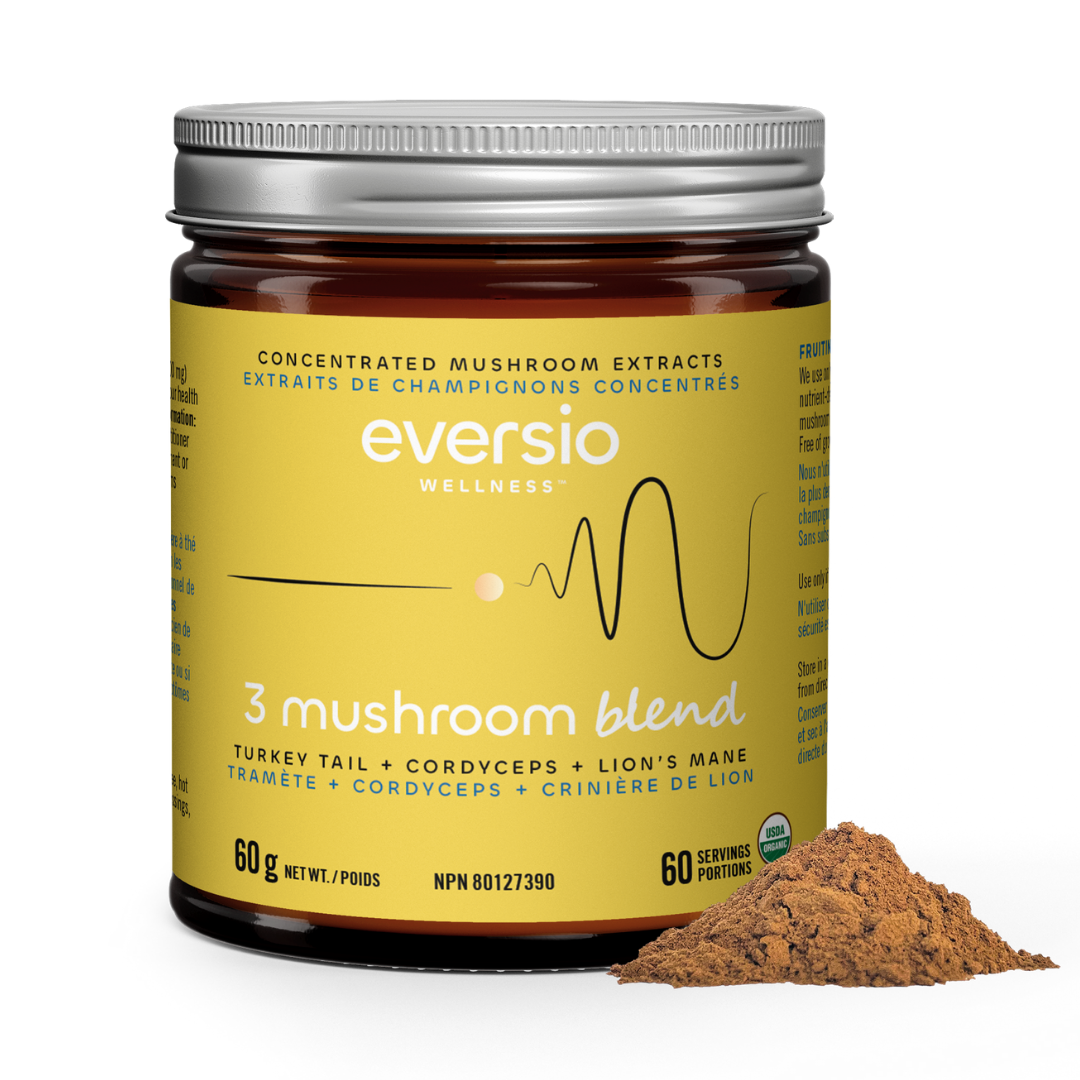
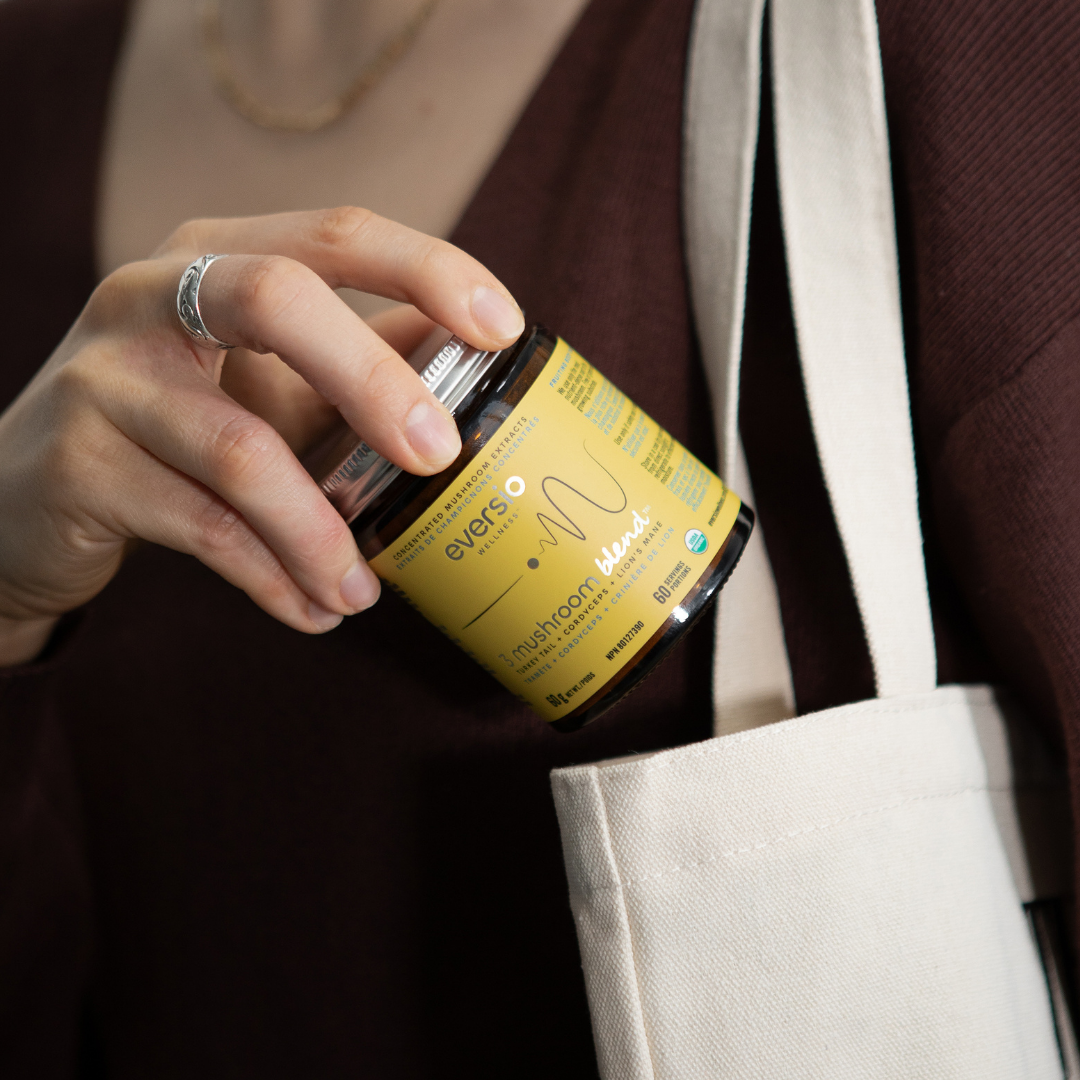
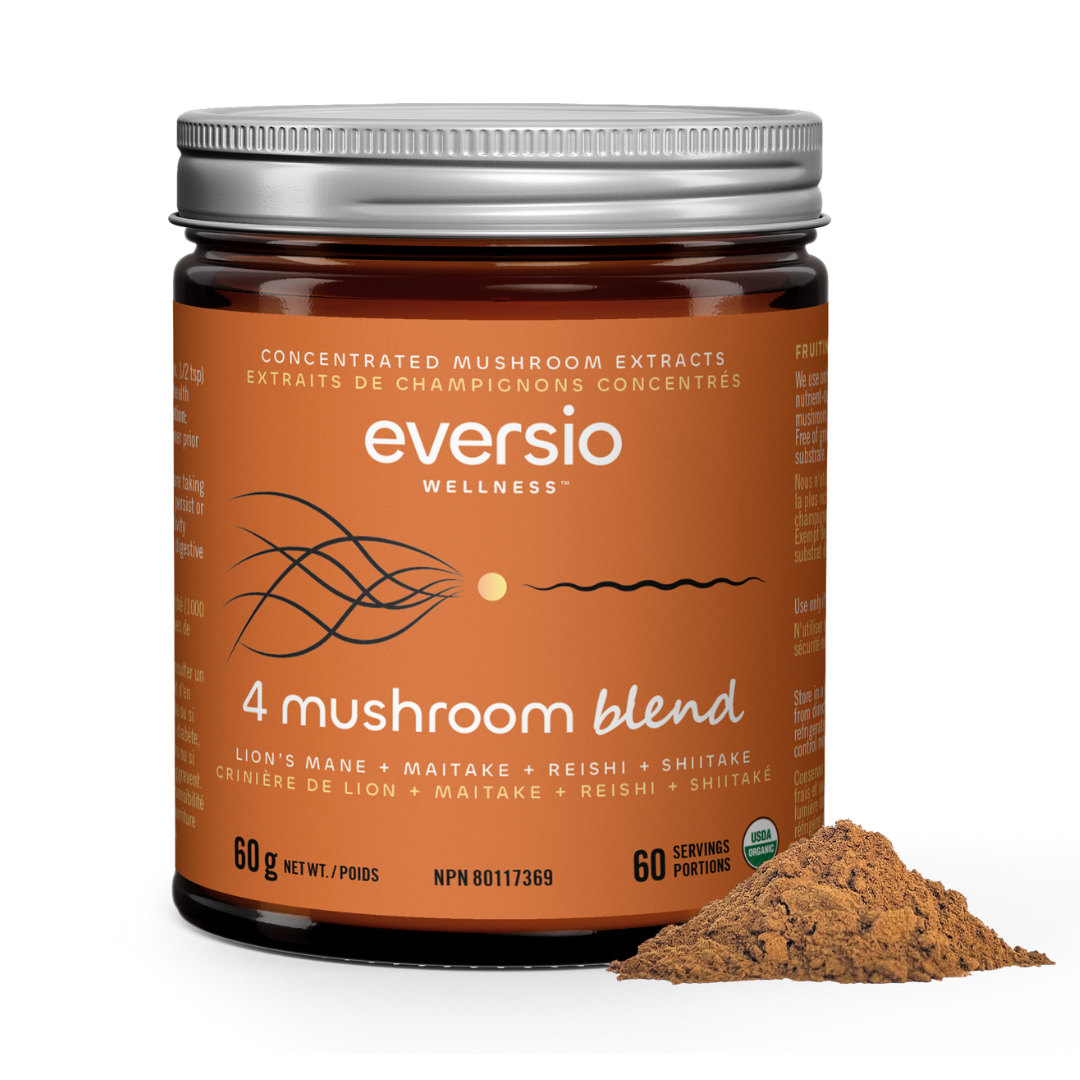
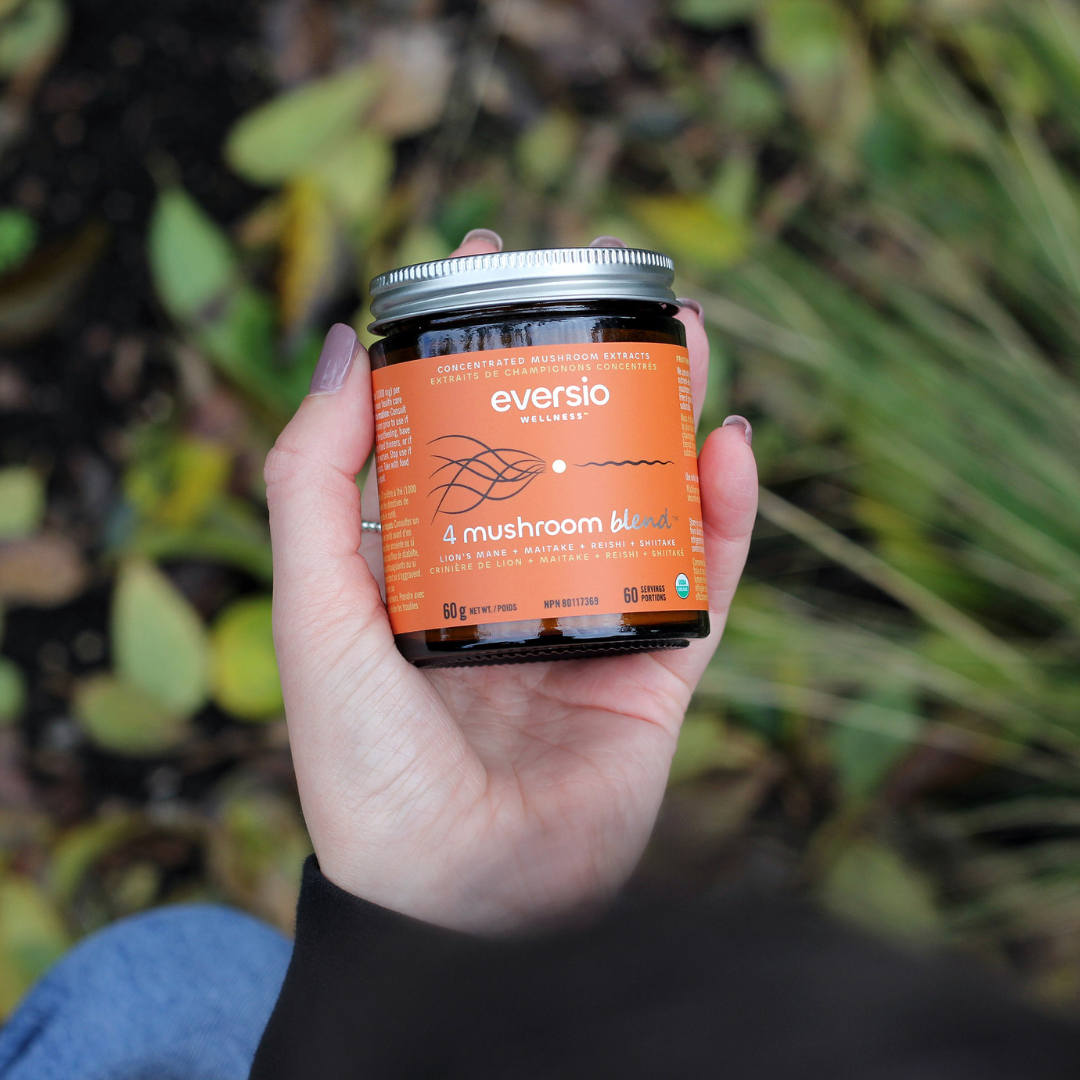
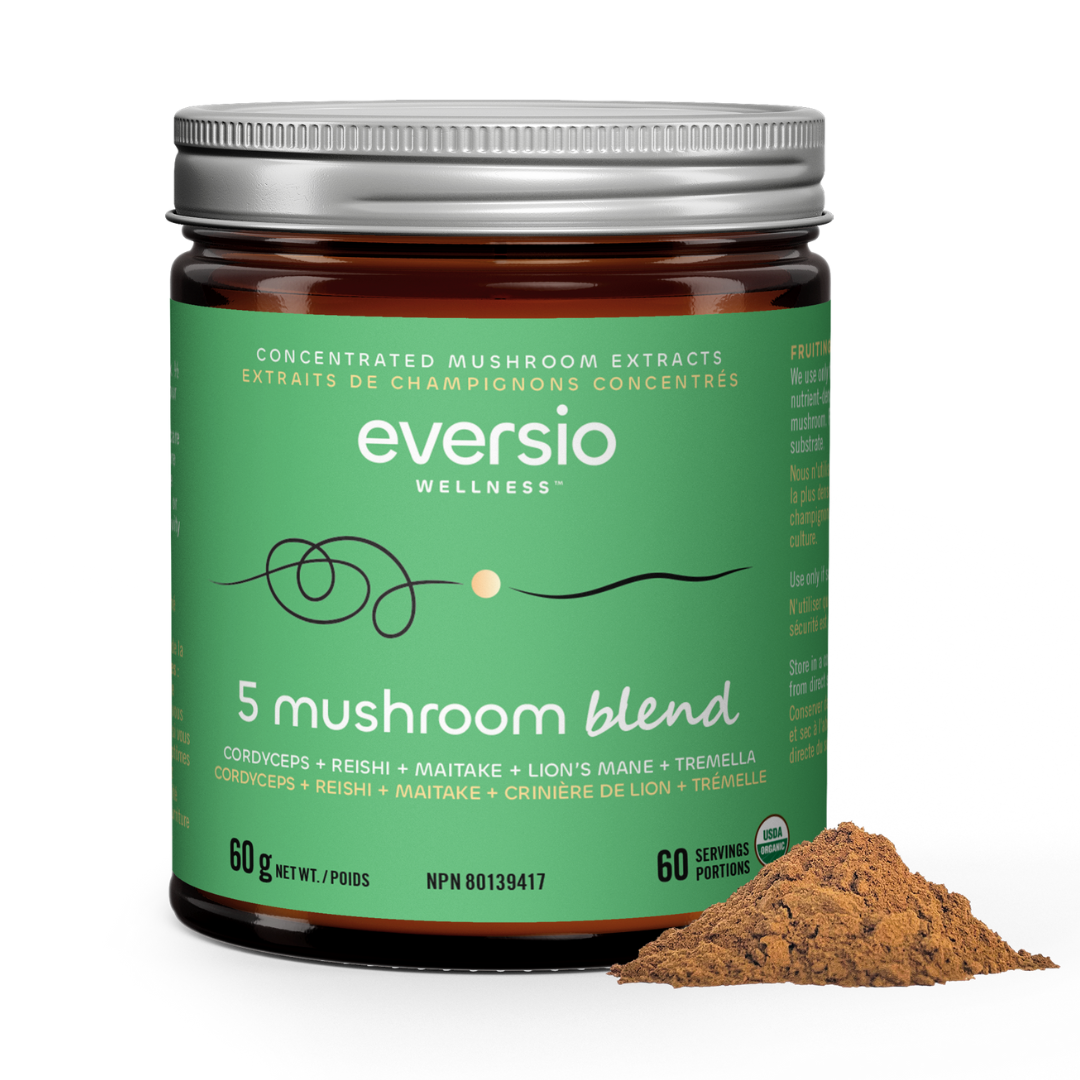
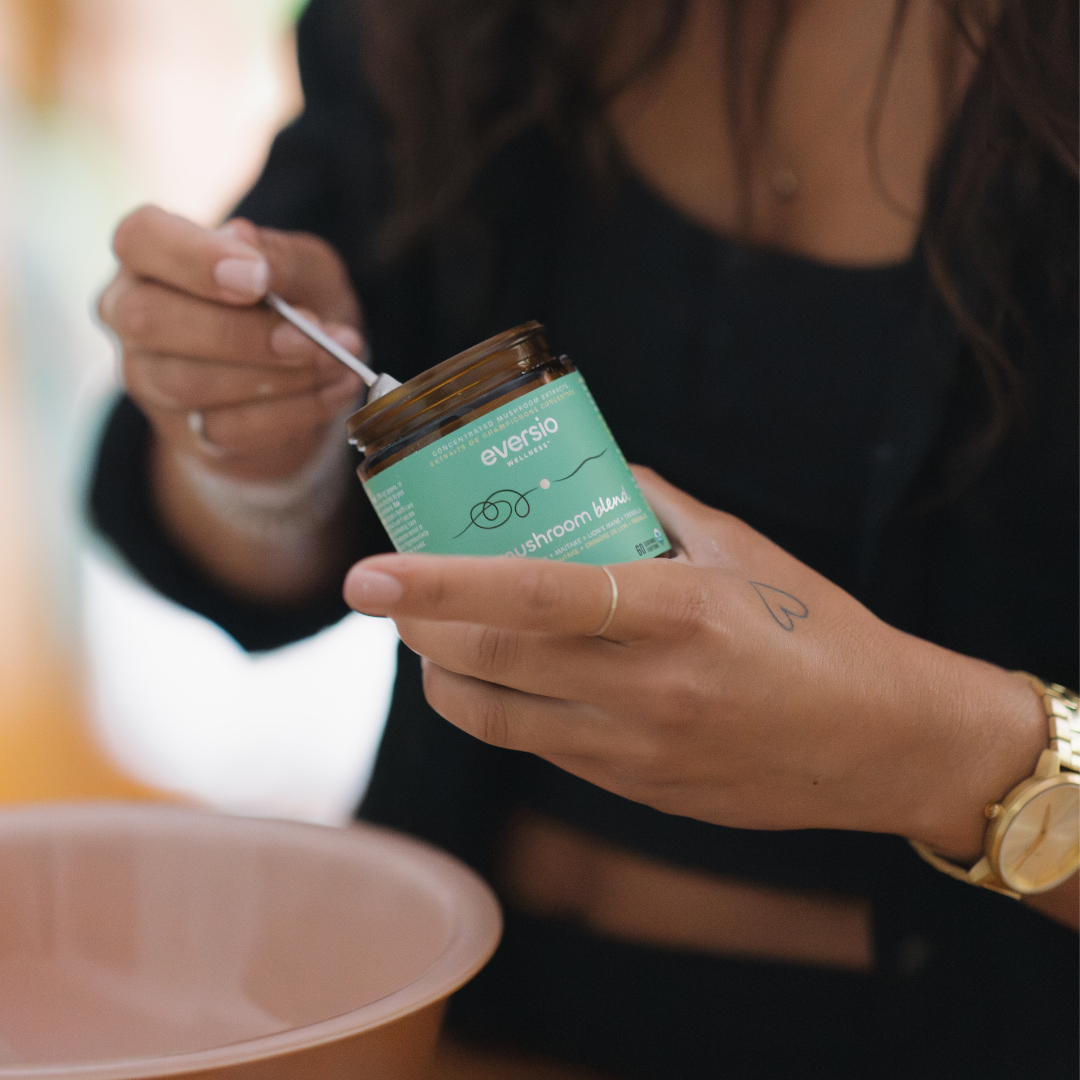
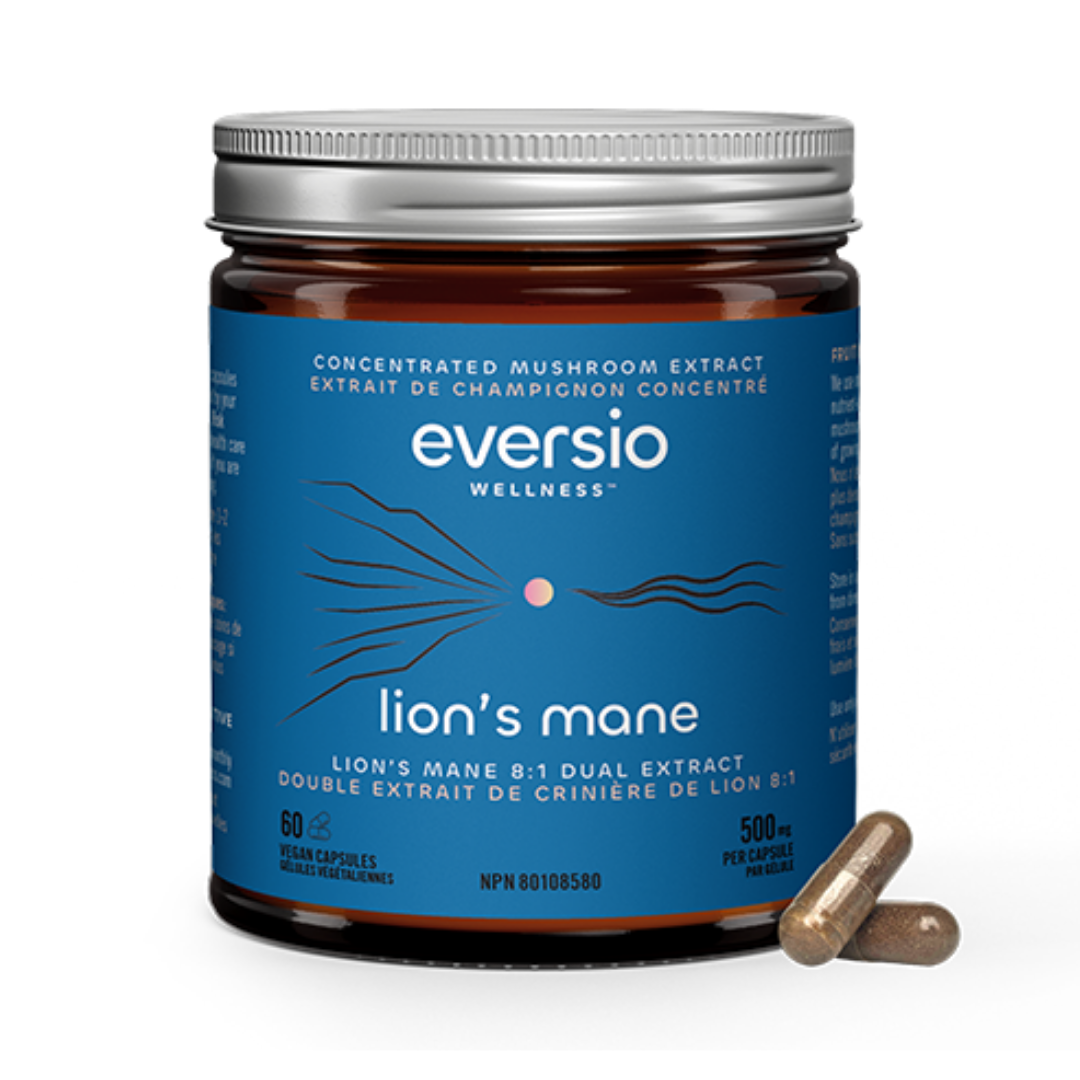
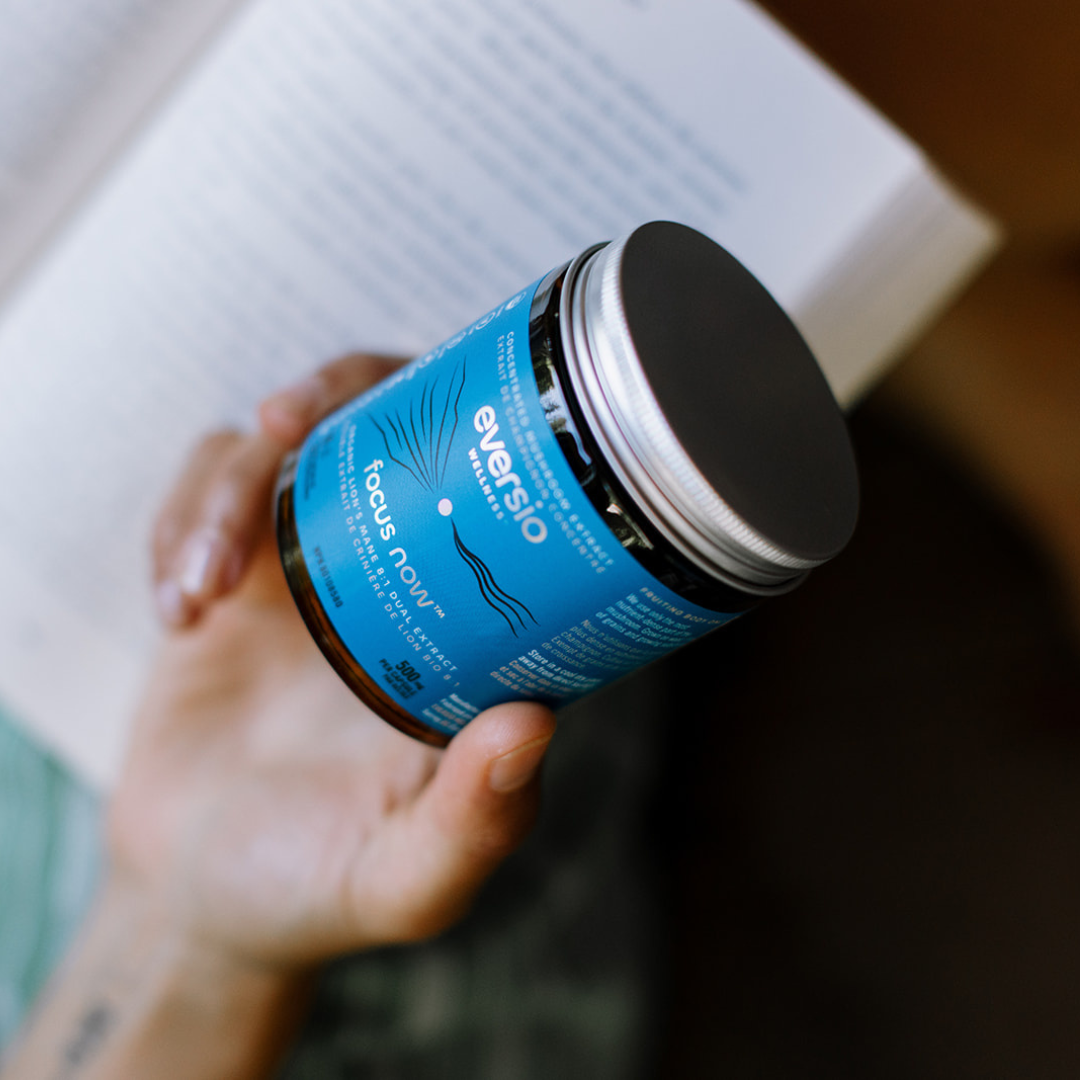
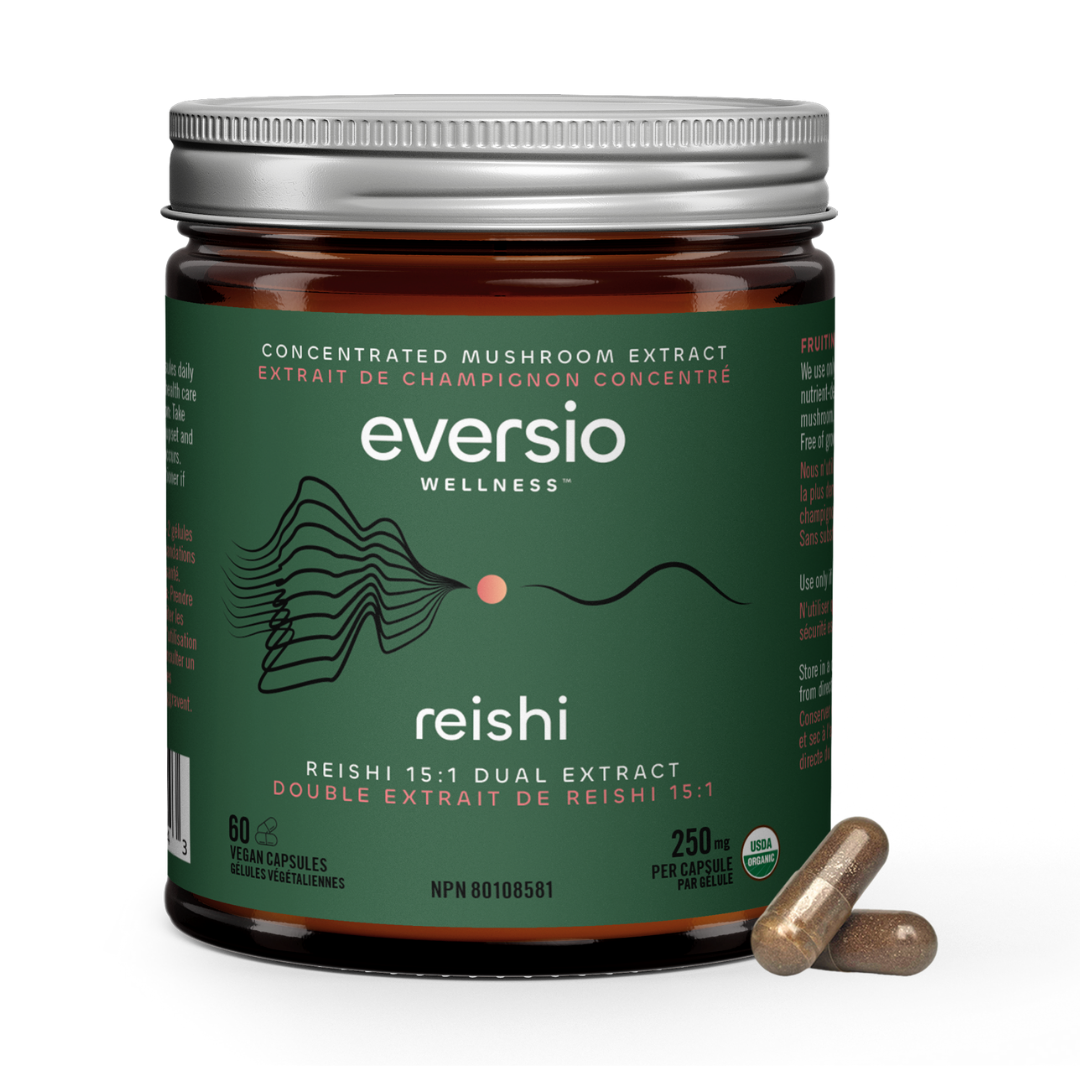
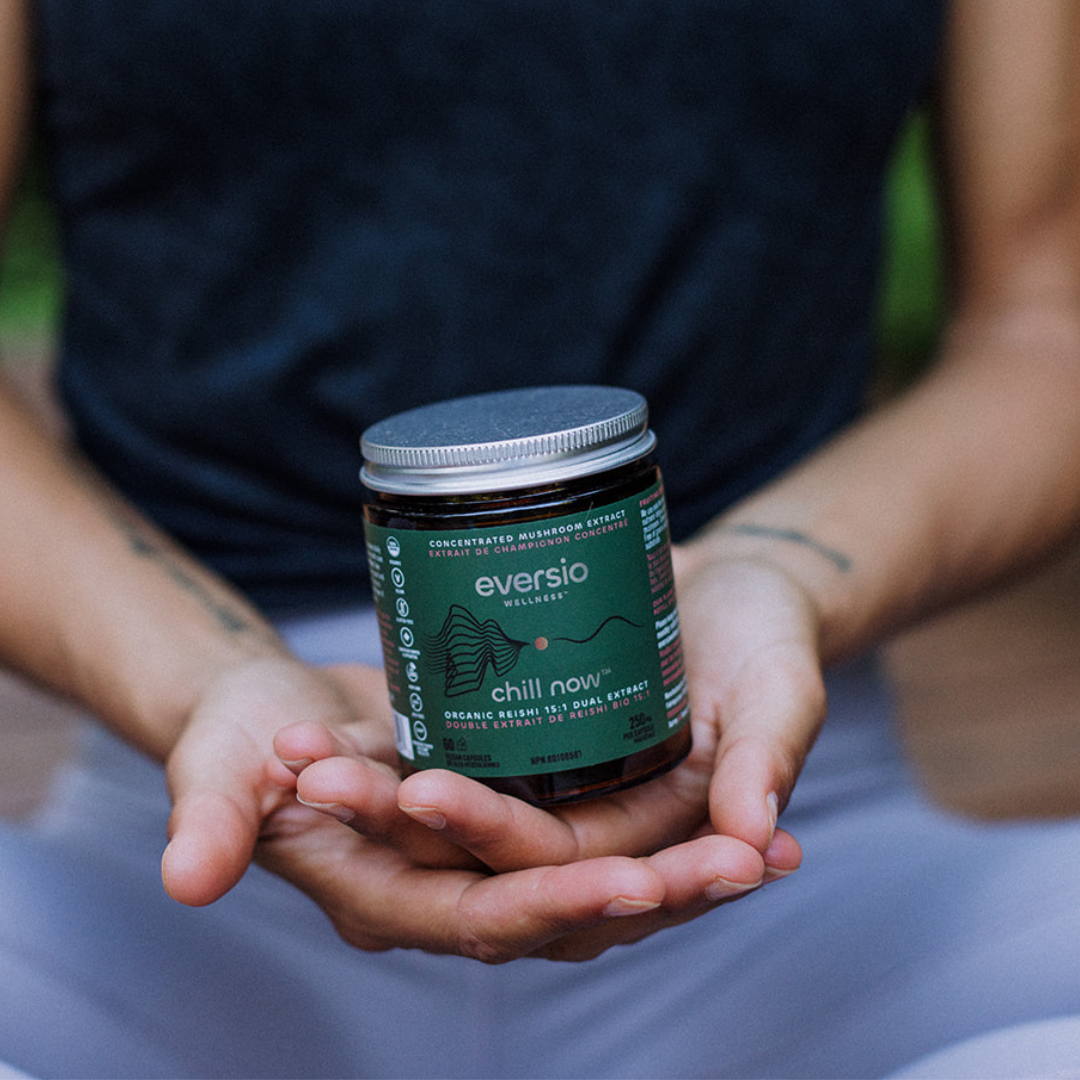





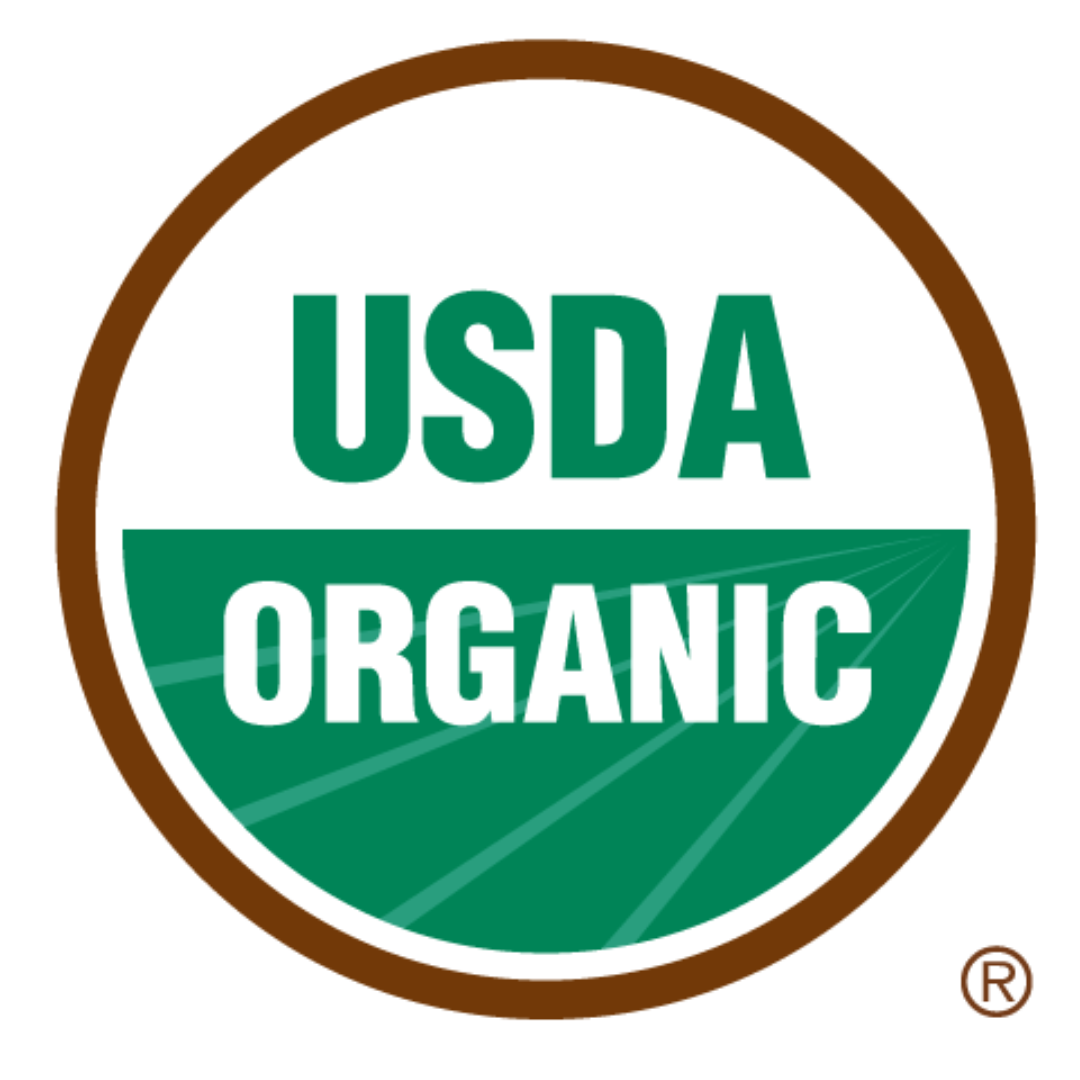


Leave a comment
All comments are moderated before being published.
This site is protected by hCaptcha and the hCaptcha Privacy Policy and Terms of Service apply.